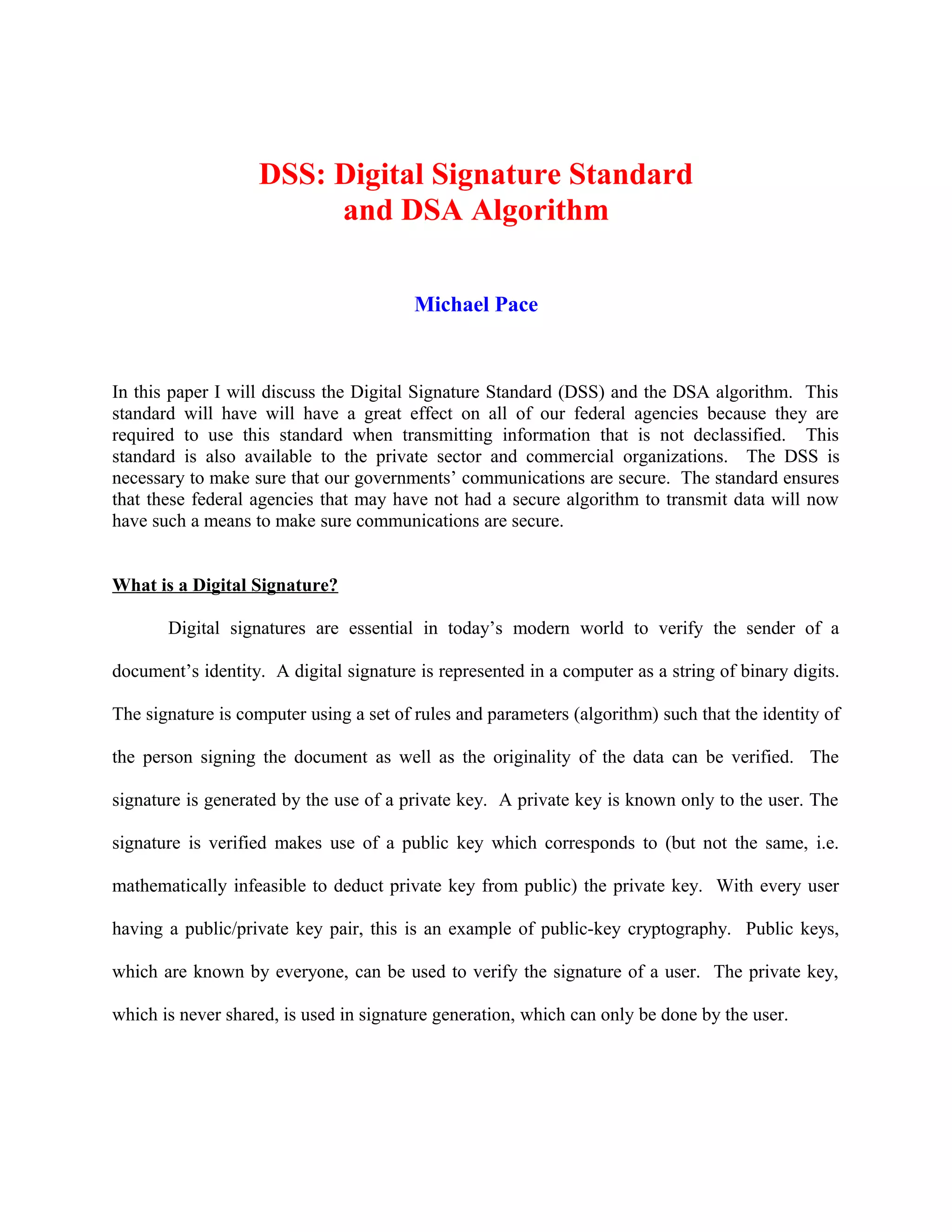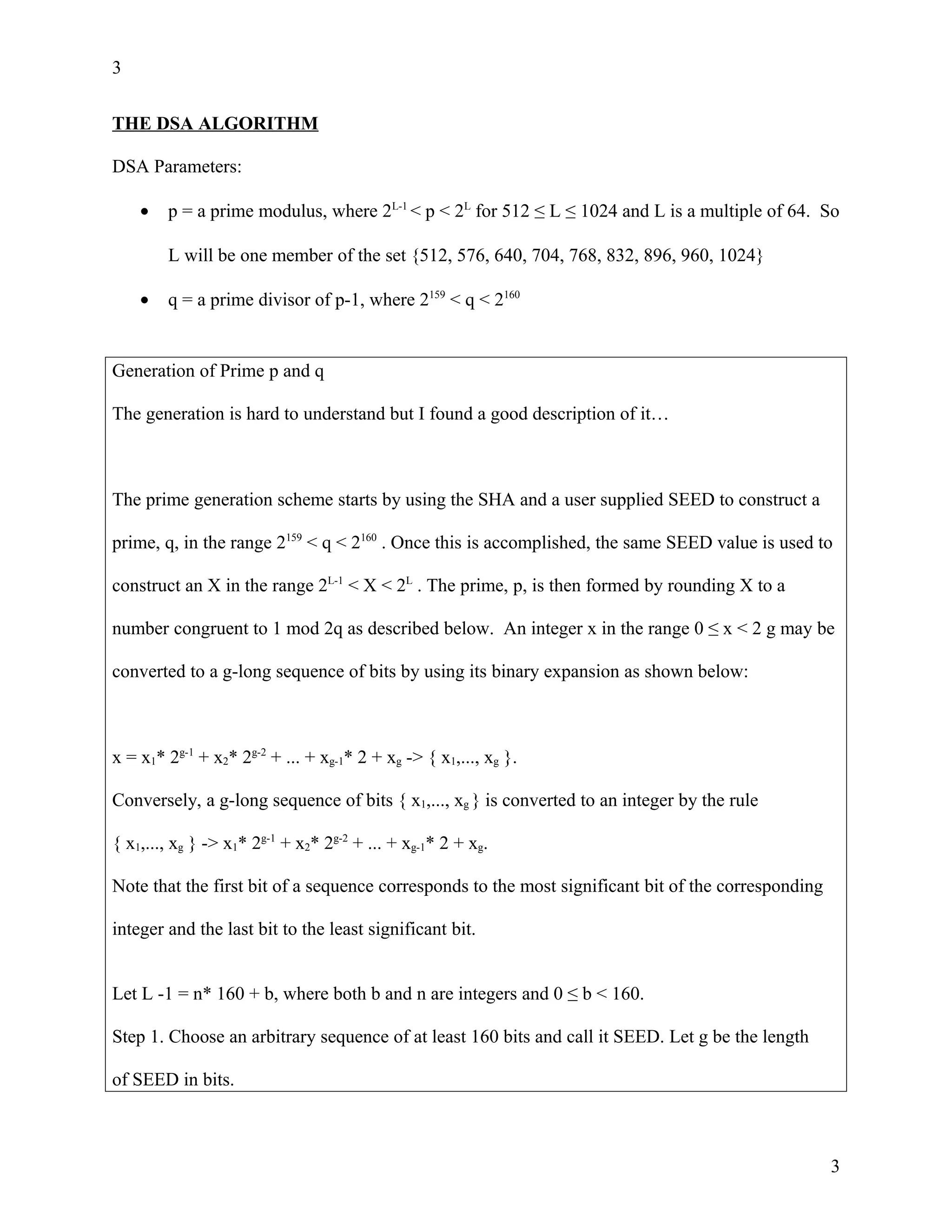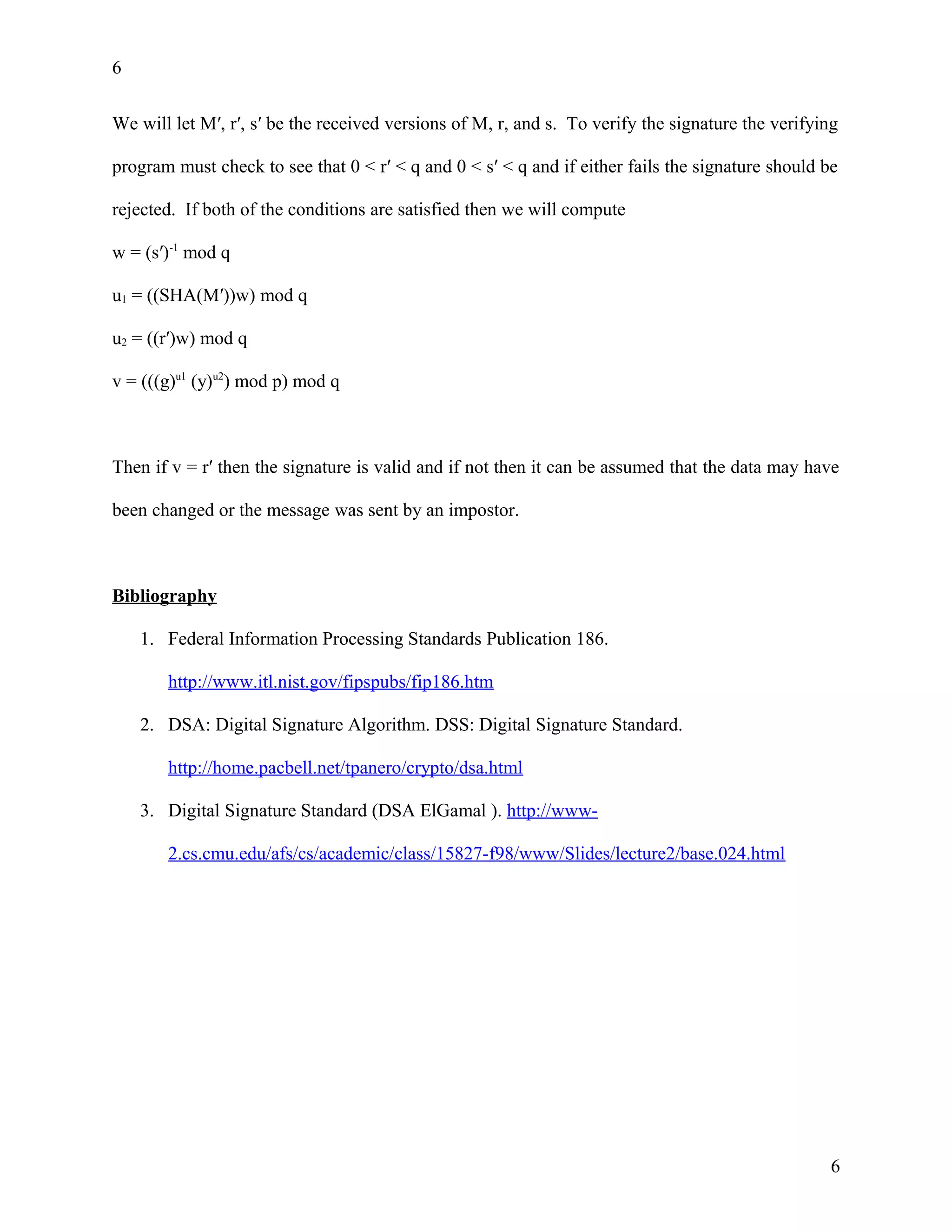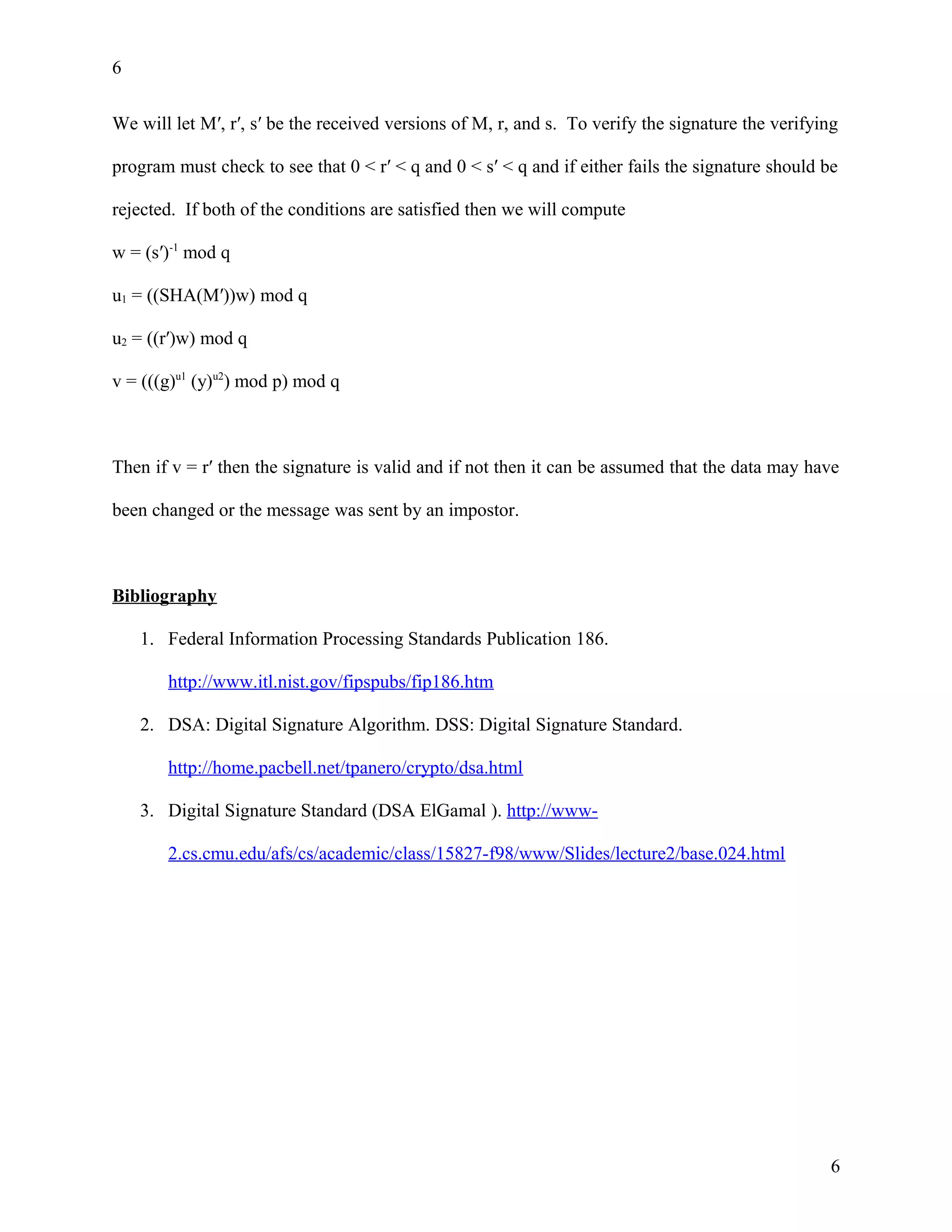The document discusses the Digital Signature Standard (DSS) and the Digital Signature Algorithm (DSA). It begins by explaining that the DSS standard requires federal agencies to use this standard for secure communication of non-classified information, and it is also available for private sector use. The DSS ensures secure algorithms for message transmission. It then describes how digital signatures work using public/private key pairs to verify identity and detect unauthorized modifications. The DSA is one of three algorithms specified in the DSS standard and generates signatures using cryptographic keys and a secure hash function. The document provides details on the parameters and processes used in DSA digital signature generation and verification.



![Step 2. Compute
U = SHA-1[ SEED] XOR SHA-1[( SEED+ 1) mod 2 g ].
Step 3. Form q from U by setting the most significant bit (the 2159
bit) and the least significant
bit to 1. In terms of Boolean operations, q = U OR 2159
OR 1. Note that 2159
< q < 2160
.
Step 4. Use a robust primality testing algorithm to test whether q is prime 1 .
Step 5. If q is not prime, go to step 1.
Step 6. Let counter = 0 and offset = 2.
Step 7. For k = 0,..., n let
Vk = SHA-1[( SEED + offset + k) mod 2g
].
1 A robust primality test is one where the probability of a non-prime number passing the test is at
most 2-80
Step 8. Let W be the integer
W = V0 + V1* 2160
+ ... + Vn-1* 2(n-1)* 160
+ (Vn mod 2b
) * 2n* 160
and let X = W + 2L-1
. Note that 0 ≤ W < 2L-1
and hence 2L-1
≤ X < 2L
.
Step 9. Let c = X mod 2q and set p = X -(c -1). Note that p is congruent to 1 mod 2q.
Step 10. If p < 2L-1
, then go to step 13.
Step 11. Perform a robust primality test on p.
Step 12. If p passes the test performed in step 11, go to step 15.
Step 13. Let counter = counter + 1 and offset = offset + n + 1.
Step 14. If counter ≥ 212
= 4096 go to step 1, otherwise (i. e. if counter < 4096) go to step 7.
Step 15. Save the value of SEED and the value of counter for use in certifying the proper
generation of p and q.
4
4](https://image.slidesharecdn.com/dssdigitalsignaturestandardanddsaalgorithm-150322235359-conversion-gate01/75/Dss-digital-signature-standard-and-dsa-algorithm-4-2048.jpg)


